
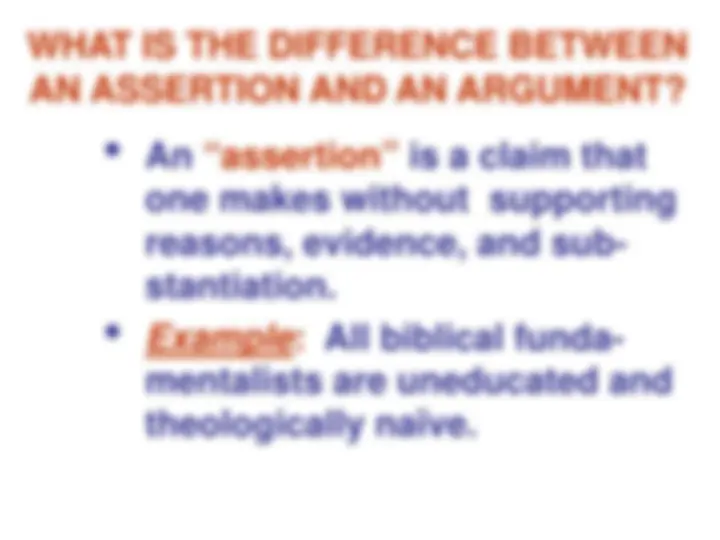
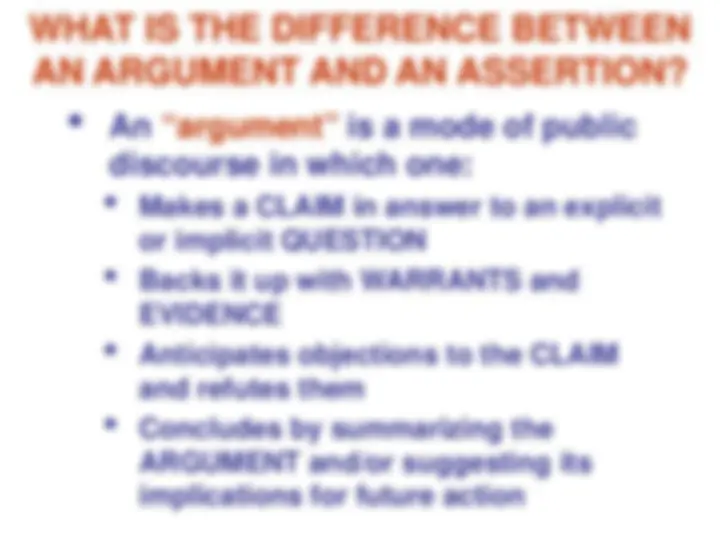
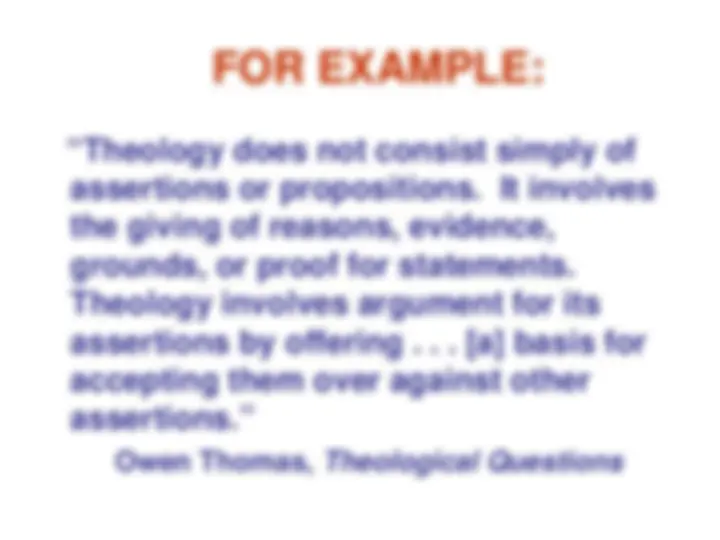
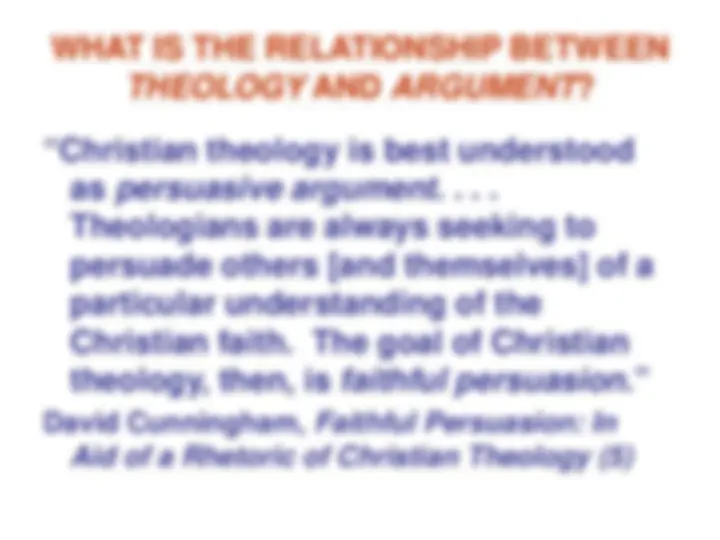

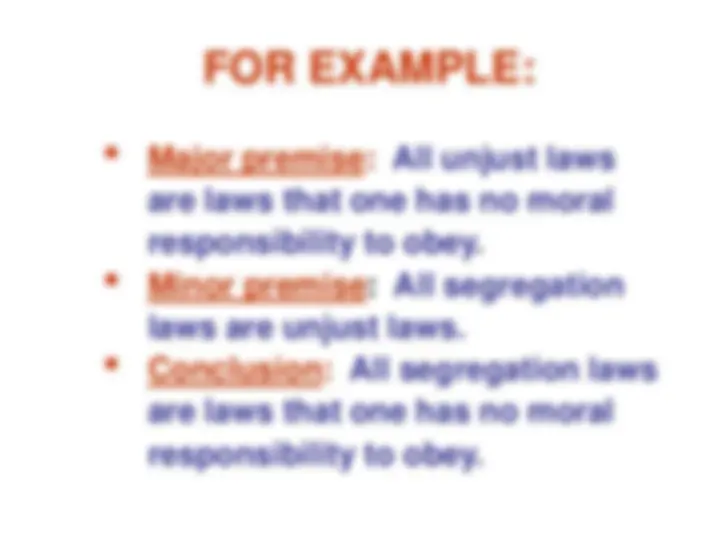
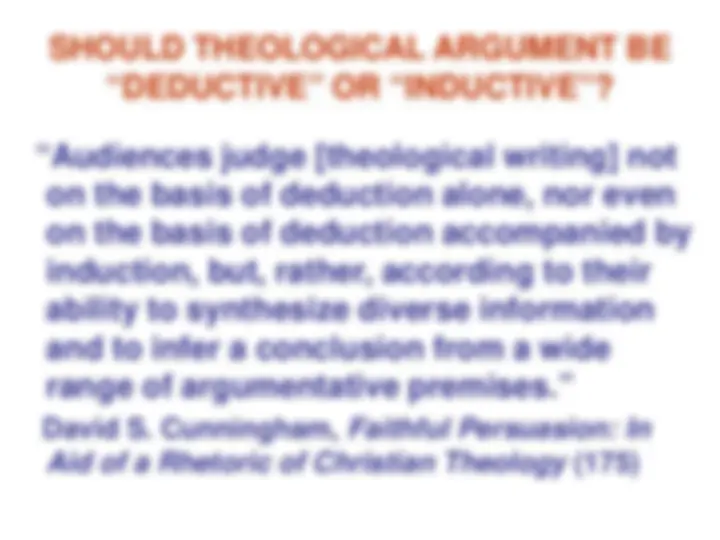
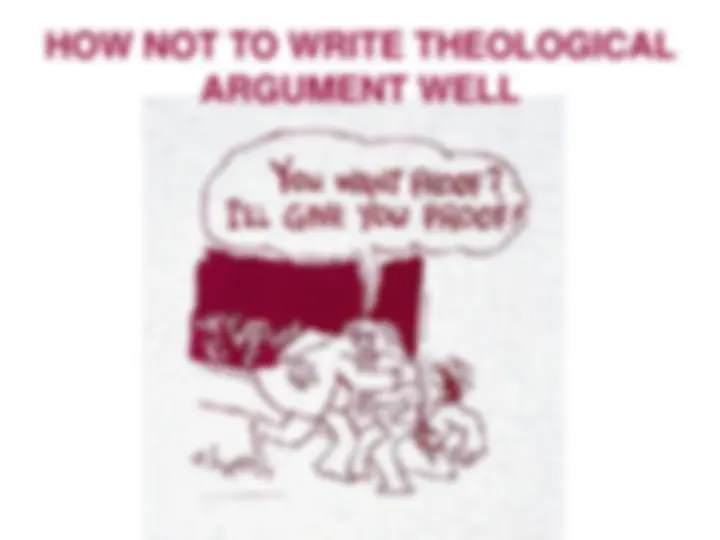

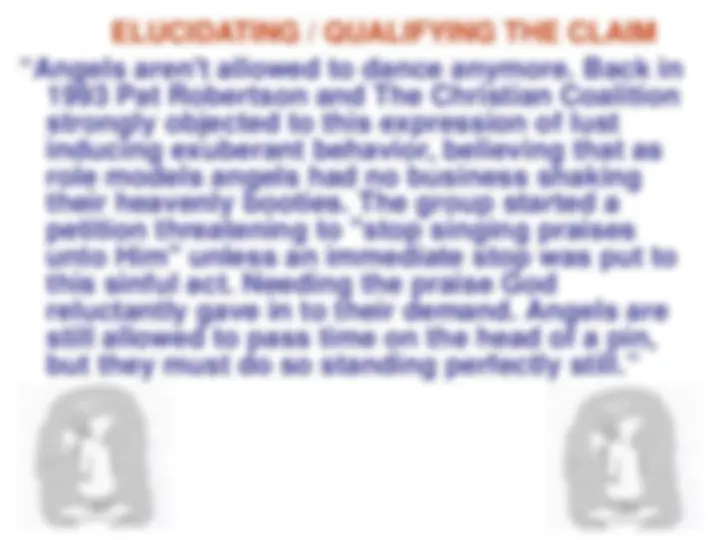
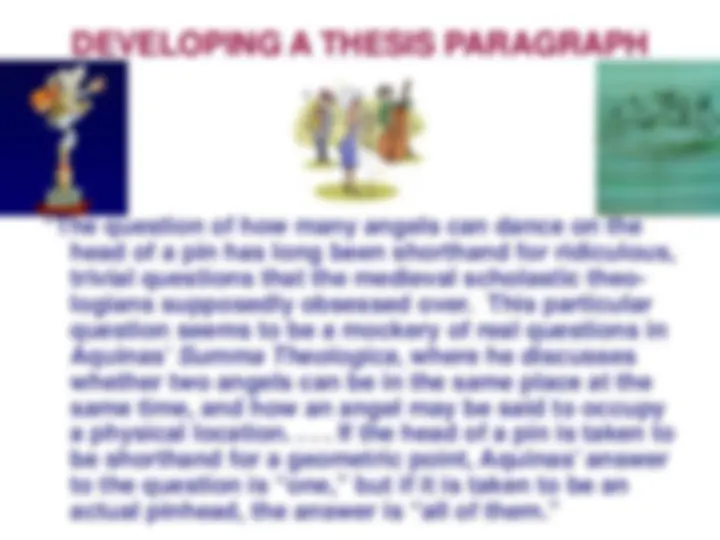
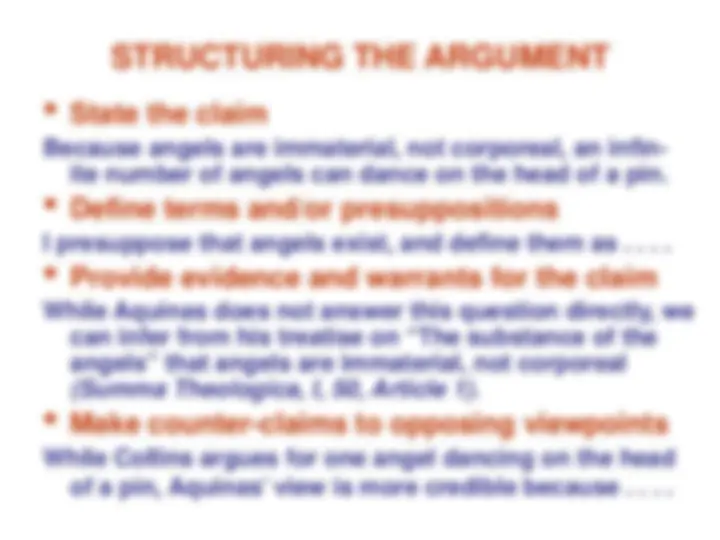
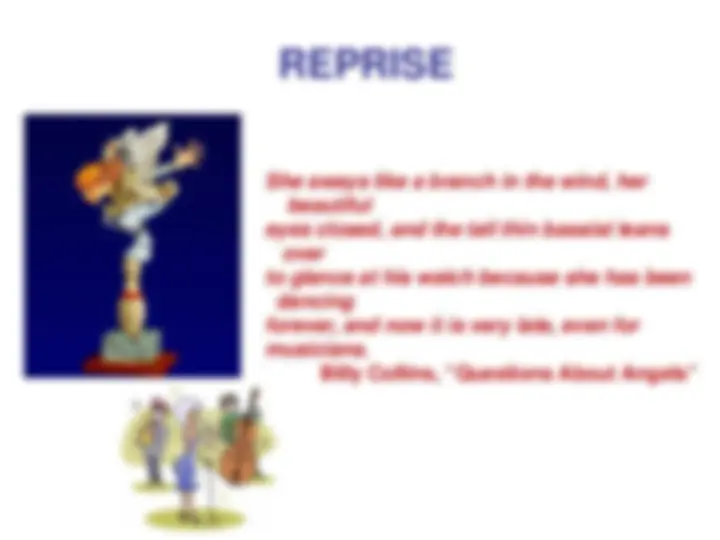


Study with the several resources on Docsity

Earn points by helping other students or get them with a premium plan


Prepare for your exams
Study with the several resources on Docsity

Earn points to download
Earn points by helping other students or get them with a premium plan
Community
Ask the community for help and clear up your study doubts
Discover the best universities in your country according to Docsity users
Free resources
Download our free guides on studying techniques, anxiety management strategies, and thesis advice from Docsity tutors
“Theology does not consist simply of assertions or propositions. It involves the giving of reasons, evidence, grounds, or proof for statements. Theology ...
Typology: Schemes and Mind Maps
1 / 21

This page cannot be seen from the preview
Don't miss anything!














Adapted from Chapter 3 of Writing Theology Well: A Rhetoric for Theological and Biblical Writers, Lucretia B. Yaghjian
“Theology does not consist simply of assertions or propositions. It involves the giving of reasons, evidence, grounds, or proof for statements. Theology involves argument for its assertions by offering... [a] basis for accepting them over against other assertions.” Owen Thomas, Theological Questions
“Christian theology is best understood as persuasive argument.... Theologians are always seeking to persuade others [and themselves] of a particular understanding of the Christian faith. The goal of Christian theology, then, is faithful persuasion .”
David Cunningham, Faithful Persuasion: In Aid of a Rhetoric of Christian Theology (5)
are laws that one has no moral responsibility to obey.
laws are unjust laws.
are laws that one has no moral responsibility to obey.
“Audiences judge [theological writing] not on the basis of deduction alone, nor even on the basis of deduction accompanied by induction, but, rather, according to their ability to synthesize diverse information and to infer a conclusion from a wide range of argumentative premises.” David S. Cunningham, Faithful Persuasion: In Aid of a Rhetoric of Christian Theology (175)
ENGAGING THE QUESTION
How many angels can dance on the head of a pin?
“… perhaps the answer is simply one: one female angel dancing alone in her stocking feet, a small jazz combo working in the background.” Billy Collins, “Questions About Angels”
“The question of how many angels can dance on the head of a pin has long been shorthand for ridiculous, trivial questions that the medieval scholastic theo- logians supposedly obsessed over. This particular question seems to be a mockery of real questions in Aquinas’ Summa Theologica, where he discusses whether two angels can be in the same place at the same time, and how an angel may be said to occupy a physical location.... If the head of a pin is taken to be shorthand for a geometric point, Aquinas’ answer to the question is “one,” but if it is taken to be an actual pinhead, the answer is “all of them.”